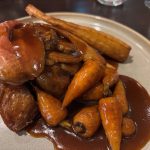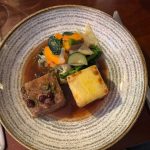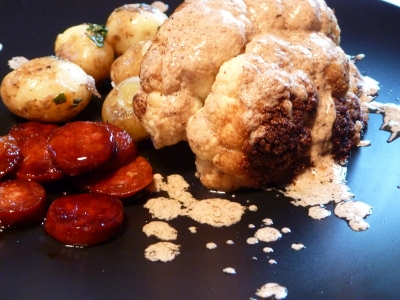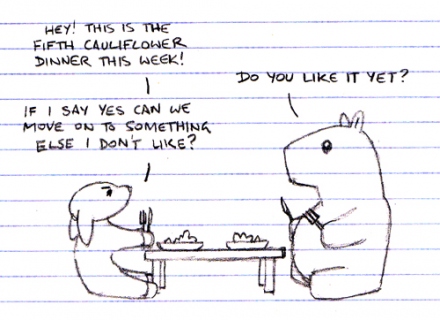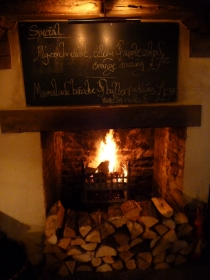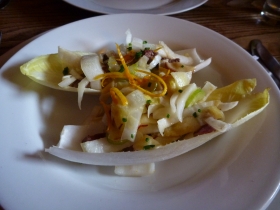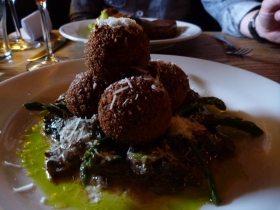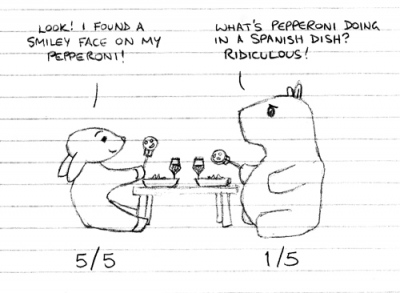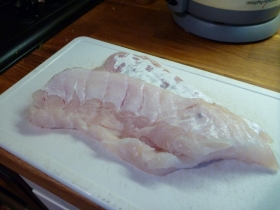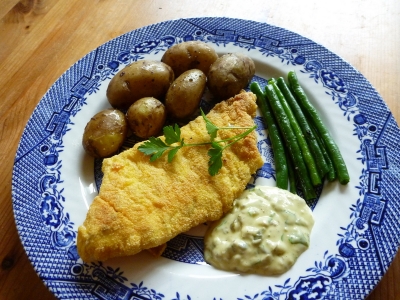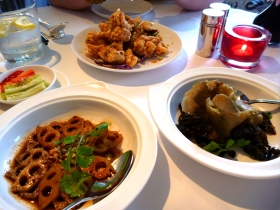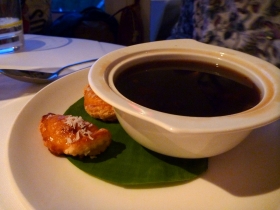For me Chinese has always been the ugly duckling of cuisines. It is spoken of as one of the three great originating cuisines of the world; French, Persian and Chinese. But my experiences of Chinese food in Britain have typically ranged from jolly tasty to utterly dire, with no hint of the snowy white swan that might one day arise from the chunks of chicken breast in various sauces (or from “pork in jam” either, a friend’s name for sweet and sour pork). Surely someone out there is doing to Chinese cuisine what places like Benares or the Cinnamon Club have done to Indian?
Touted as the best Chinese restaurant in London, I was keen to see whether Min Jiang was that swan.
It certainly has a fantastic setting. The Royal Garden Hotel might look like a monstrous and uncaring brutal edifice squatting at the end of Kensington High Street, but once through the doors and up ten flights in the lift we are greeted by a beautiful dining room with stunning views over Hyde Park towards the Royal Albert Hall and far beyond. Service was friendly but a little bipolar; waiters hovering to whip our plates away as soon as the last mouthful of starters were eaten, but the post-mains conversation gradually switching to “do you think we should ask someone for a dessert menu?” I couldn’t decide whether they wanted the table back or wanted to keep us all night. Nothing to ruin the meal though, unless you’re in a real hurry.
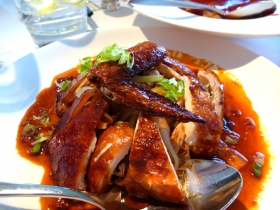
Our starters were the high point for me. I enjoyed my preserved zhachoi in spicy XO sauce. This included the revelation that zhachoi is a kind of vegetable, possible related to kohlrabi, which has a wonderful taste and texture when preserved and thinly sliced. The XO sauce it was braised in had a deepy savoury and very spicy taste. Crunchy deep-fried soft shell crab with crispy curry leaves worked well, as did the classic crispy fried squid with chilli and garlic. The fourth starter, of lotus root in a punchy sichuan sauce, was also great. Plating and presentation was typical of all my previous experiences of Chinese, however: there was some stuff, and it was on a plate.
We had pre-ordered a course of “famous” crispy duck, and it was certainly a more elegant variation on the fibrous sticky oily goodness beloved of Chinese restaurants throughout the land. However, I’m not sure if the elegance was a huge improvement, as the delicacy of the duck was rather beaten into submission by the strong hoi sin sauce. The alternative condiments of sweet garlic puree with pickled radish worked better.
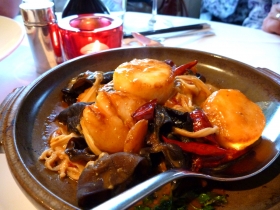
The main course included a delicious plate of hot, smoky sichuan roast chicken. Delicate Dover sole served with various mushrooms of quite distinct textures was pleasant but lacked any flavour to call its own. There was a splendid specimen of pork and jam, in the form of nine neat cubes of braised belly covered in a smooth sweet-and-sour sauce that was abundantly richer and better balanced than the typical fayre. For my taste the white fat was still far too prevalent in the belly, but I’m aware that this is a more classically Chinese way of enjoying fat. The final dish divided us a little; I felt that sweet, simple scallops were being unfairly punished in a stickily spicy bean curd sauce that would have paired much more happily with deep-fried tofu or something, anything else. Tim declared it his favourite dish.
Desserts, and here once more Min Jiang is certainly applauded for sticking to authenticity. “Eight Treasure Tea” was indeed a bowl of dark and somewhat bitter fermented tea with eight different preserved fruits and nuts lurking below the surface; fascinating, and certainly challenging to a western palate. My soya pudding, somewhat like a
delicate pannacotta, was less startling and was very good indeed in a pond of warm ginger consomme with sticky bits of flavoursome osmanthus flowers on top. Mango cream with sago pearls and pomelo was light, refreshing and sharp in taste while black sesame dumplings were chock full of that lovely dark, nutty black sesame flavour.
So, is Min Jiang a swan? Not for me. Yes, I enjoyed probably the best and most interesting Chinese meal I’ve eaten in Britain. But they’ve still done next-to-nothing with plating and presentation; each dish is just some stuff, on a plate. At a French bistro I can get some delicious French stuff, on a plate, for £20 a head three courses. Or I can spend £60+ per head to enjoy high French cuisine with eye-catching and inspiring presentation. Min Jiang cost £70 per head without wine, and for that I’m looking for Chinese cuisine to be taken to that next level. This isn’t a friendly neighbourhood restaurant doing good authentic cooking, this is a fine dining room with a price tag to match. I expect more.
I have to admit, though, the view from the table does almost make up the difference. Almost.



